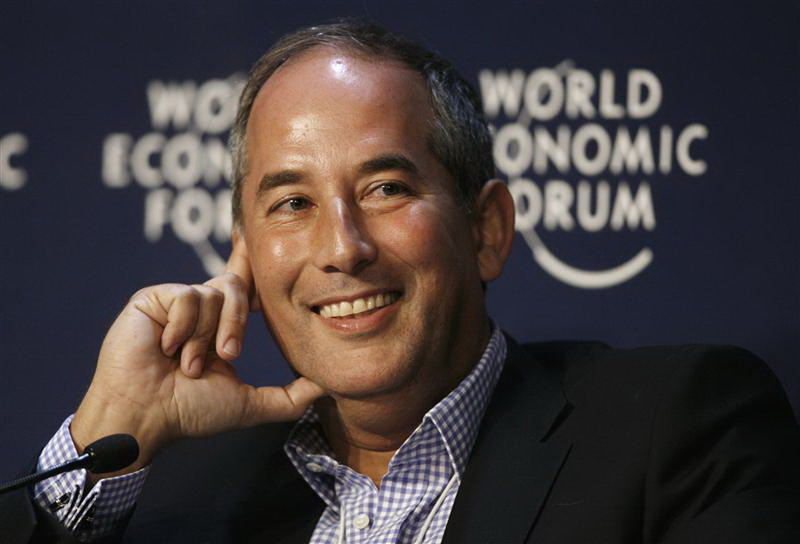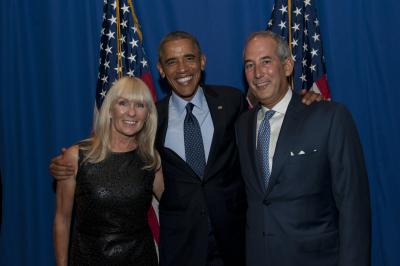A couple of weeks ago some old friends and I headed out to the Meadowlands Izod Center to hear The Dead. Not exactly The Grateful Dead of old as Jerry Garcia can never be replaced but a reformed and worthy sequel. Rather than seek some pale American Idol simulcra of Jerry the remaining original members of the band were smart enough to reinvent themselves. So this year they are touring with excellent musicians including Branford Marsalis who do not try to ape Jerry but instead take the sound into new places.
The Dead were always a great concert band – their rollicking jazz-like improvisations and modulations turned each concert into a different experience. For these musicians the goal of a concert was never to reproduce the exact sound of their latest studio album; rather each show was a unique jam session which might very well feature some songs that had also been released but never in the same way. The ultimate “been there done that.”
Along the way on that proverbial long strange trip I believe that The Grateful Dead discovered the new economic model for the music industry 40 years ago. We are all familiar with the sad story of how music industry bosses sought to hold back the zero-cost reproduction capabilities of digital media by locking-up the music first in vinyl records then in cassettes and eight track tapes and finally in CDs. When young folks everywhere joined a mass revolt against copyright and just downloaded MP3s the music industry sued them and then ultimately capitulated into the waiting arms of Apple’s Steve Jobs.
What the Dead figured out a long time ago is that artists should give away recorded music and make their money from touring building brand and merchandising. Most of the band’s 5000+ live shows are available for download or at least stream on the internet (see www.archive.org/details/GratefulDead or www.deaddisc.com/GDFD_Dicks_Picks.htm). Rather than suing fans to prohibit bootleg recordings the Dead allowed its devotees to set up microphones at their concerts and also provided high quality tapes of every show right off the mixing board.
Thus the recordings themselves become viral advertisements for the group and build brand and demand for concert tickets and merchandise which are harder to copy. Now the downside of this model is that the band cannot just sit back and count royalties from the sale of its recorded music and deign to do a concert tour every other year to promote its latest album. Instead the musicians need to embrace touring and playing as their primary mission. The music company also becomes more of a brand management and promotion company with likely reduced economics. However this is not far from where the music industry seems headed itself with concepts like the “360 contract” which seeks a cut of non-recorded income.
As for me I was just there to enjoy the show and muse upon content monetization models. Oh and yes I bought Mariana and Walter some really cool tie-dyed tee shirts.






Hi Tom! I used to work for you @ the RSTL Bangkok development office. I think you’re absolutely right about live music being the future business model of the music industry and bands like the Grateful Dead being an example of how it can work. Indeed before the 1950s live music *was* the business model as the record companies did not have the hold over distribution that they are only now realizing they’ve lost. I believe this so much that my new company has joined up with a new venture that is bringing this to the internet right now. Hope you’ll pardon my crass commercial plug. 🙂 Last year’s Grammys confirm your perspective as well. While they didn’t give their CDs away – Robert Plant and Alison Krauss’ album produced by T-Bone Burnett crossed all genre boundaries and would have been impossible to get past the record company execs if not for the resounding critical & commercial response from their live tours. The result was they swept all 5 nominations including top awards Album and Song of the Year ( http://www.reuters.com/article/entertainmentNews/idUSTRE5147ZF20090209 ). T-Bone makes some great comments about the future (or lack there-of) of pre-recorded music at the 13:30 mark in this interview on Charlie Rose ( http://www.charlierose.com/view/interview/8780 ) that really sums it all up. My company is eJamming.com and we allow musicians to jam together live over the internet but stay in sync just like they were in the same room. We demo’d this at the Consumer Electronics Show in Vegas last year with Intel’s CEO & SmashMouth ( http://www.youtube.com/watch?v=GusCPIQ4GF0 ) and just last weekend in Singapore for our commercial launch. Our next release will allow bands to play live events online and make money doing it so we help solve the “having to live on the road” problem by providing live shows online just like the radio stations used to do back in the heyday of live music from 1920s to 1940s. Online music won’t replace in-life shows but it will sure help startup artists build their following increase ticket sales and provide a new revenue stream that never existed for them before. It’s all coming back around but this time the artists and fans get to make the call (and the money) thanx to the internet. Always nice to see independent verification of your beliefs! Now just need our designers to come up with a tie-dye motif for the live events page…
hi Very nice to visit your blog and found very interesting. I also have an blog http://www.jazd.net which is a free online B2B business directory for Sales Solution with Guaranteed Results. I Want that You will give me a link on your blog and I will do the same for you. Thank you Eric Melin
Hi Tom Nice post and great observation about the evolution of the music industry commercial model. As we are seeing in other industries the evolution of the Internet is causing a revolution in the respective business models with a consumer led disruption in traditional value chains. The example of the Dead shows how the band delivers value to their fans in the way the fans want. Let’s face it no Dead studio record could match their live performances and quite frankly I think any Dead Head would tell you given a choice they would rather see a show than buy an album (if that was the choice). You also point out the fact that this model requires value to be delivered consistently rather than the “cash cow” model where value is delivered up front and revenue is dependent on recurring revenues with little or no subsequent value. This is also a great point in that it needs to apply to all industries as we shift toward value based markets and away from a pure supply/demand model. Sorry about the lengthy comment I should just post a blog about it! Thanks The “Other” Tom G.
If only more similar models existed in the news world. Trying to think of an analogical paid service the best I could come up with was cable news or premium wire services like reuters of course. Otherwise news is free or cheap. However it’s interesting that blogging has done better than amateur music in terms of adoption rates. But textual information remains hard to monetize even if it gets the eyeballs. That’s where premium services like Reuters can be a trading floor for information and with more rich media can create even richer experiences. The question is can such paid services scale to meet the number of eyeballs? Which begs the question : Can a reuters service be the iTunes for the news world?
Hello Tom I came across your blog while searching for companies in the Boston area. You may find sellaband – http://www.sellaband.com – interesting. I first heard of this group while attending the 11th Annual Global Convention of Sixt in Monte Carlo in 2008. It challenges the traditional music industry and encourages aspiring artists and music lovers to go into business together. SellaBand aims to level the playing field of the global music industry. Anyone can invest in a SellaBand artist or band and once they have achieved the required amount of investment investors receive a limited edition copy of the album. On top of that the artists and their fans share equally in the revenues of the album. SellaBand is an exciting way of discovering new music changing the face of the music industry and being part of the fun. To date 32 Artists from 13 different countries have raised the full $50000 and over $2500000 has been invested in unsigned artists. SellaBand has proven that new talent is still out there waiting to be heard and that music fans from all over the world are willing to put in their hard earned cash to make it happen. Greetings from Southern France Christine Dunton-Tinnus